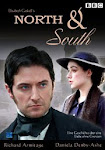Attempting to be more cultured, I ventured to Nymphenburg Palace (or Schloss Nymphenburg in German) in Munich. This palace was built in 1664 as a gift from Elector (they didn't have Kings then) Ferdinance Maria to his wife Adelaide of Savoy as a present for giving birth to their heir. This was also later the birth place of King Ludwig II (the same king who built Neuschwanstein Castle - the Cinderella Castle).
It was another cold day - it was covered with snow everywhere. By the time I walked to the palace's main entrance, my toes were frozen ...
... this pic was taken from near the tram stop where I had alighted...
Does this remind you of any other major buildings in Europe? Apparently the Nymphenburg Palace was built in the style of the Versailles in France ...
After finally getting into the museum, this was the first room I saw ... the Grand Hall/Stone Hall ... the magnificence and beauty of all the artwork in Baroque Rococo style was breathtaking.
One of the most famous rooms in the palace is the Gallery of Beauties in which King Ludwig I had commissioned to paint women he believed were great beauties. They were women from all classes of society. The best known are Helene Sedlmayr, daughter of a shoemaker and the "Spanish" dancer Lola Montez, who was the cause the revolution in 1848 when Ludwig I was forced to abdicate.
Helene Sedlmayr
... she was considered to be the epitome of Munich's beauties ... really beautiful ... even by today's standards, I think ...
... she became known to King Ludwig I when she supplied toys to his children, and the King commissioned a portrait of her. She later married the king's valet with whom she had 10 children.
Lady Jane Ellenborough
... she was an English aristocrat who lead a scandalous life. She had four husbands and many lovers, including King Ludwig I. She died in Damascus, Syria as the wife of Arab Sheikh Medjuel el Mezrab, who was 20 years her junior.
Marie Friederike of Prussia
... she married King Maximillian II, and was the mother of King Ludwig II
Lola Montez
... she didn't seem as beautiful as Helene Sedlmayr, but apparently, she was very attractive and yielded a certain power over King Ludwig I. She persuaded him, despite opposition from the people, to grant her nobility status by making her a countess. She also influenced him towards liberalism and urged him to go against the Jesuits. This contributed to the loss of popularity of the King, who was forced to abdicate later.
The Blauer Salon
... this is the room where King Ludwig II was born ...
Other rooms in the palace ...
This room was decorated in Chinoiserie style, which was very much in vogue at that time (18th century) ... to me, this was so fascinating. Being Chinese, I just took all this for granted, not knowing how much my culture had actually been so treasured by the Europeans even back in the 18th century ...
After going through the rooms in the main museum, I made my way to the Marstall Museum, which is actually the stables of the palace ...
I had read that this was worth a visit, but I'd thought of giving this a miss, since being a city gal, I wasn't too interested on anything equestrian ... unless it was Hermes (heh heh). However, as I'd already made the trek to the palace and wasn't keen on making that long and cold trek back to the tram stop, I decided to visit this as well ... and I was glad I did!
I think the horses were covered up cos it was winter ...
couldn't help thinking it was a pity I couldn't see them
in their full glory with their magnificent harnesses ...
guess that's the difference betw visiting a museum during the peak season and the off-peak season ...
The grand carriages used by the Electorates (or Kings/Queens) ...
I was wondering why they had a merry-go-round in here ...
then I read the description ...
apparently, it was for them to practise their jousting!
Interesting ...
A carriage being lovingly restored ...
Look at the beautiful ornate details on the carriages ...
they even have paintings on the carriages!
When I first set eyes on these, I was thinking it was something out of Alien/Predator ... then upon closer perusal, I realised they were actually the harnesses for the horses! And they were beautifully decorated!
Check out the gorgeous gold details ...
The Marstall Musuem also houses the Porcelain collection ...
Isn't this such a beautiful table setting?
Porcelain Snuff Boxes
In those days, these boxes were used more for fashion than for medicinal reasons. Reaching for a pinch elegantly and nonchalantly gave both ladies and gentlemen social standing, because it provided them with an opportunity to show their valuable snuff boxes, and was considered an expression of culture.
Apart from snuff (our modern day equivalent of tobacco), such boxes also contained powder, blusher and beauty spots, as well as pills and coated tablets.
As it was off-season, the pavilions like the Badenburg, Amalienburg and Padodenburg weren't open, so I just did a little wandering around near the main building ...
In winter, the water features in front of the Nymphenburg Palace are frozen over, and become quite an attraction to recreational curlers (you know those winter games where they throw this top-like thing down and a bunch of people start actively using their hockey-like sticks to scrape the ice in front of it? so much for a layman description!) ...


No comments:
Post a Comment